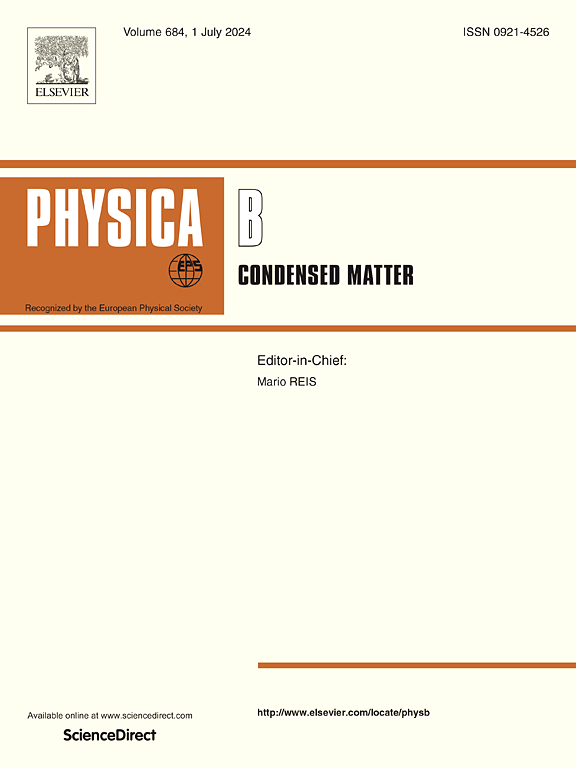利用磁性和导电性的双重性:基于氧化物的稀磁半导体综述
IF 2.8
3区 物理与天体物理
Q2 PHYSICS, CONDENSED MATTER
引用次数: 0
摘要
在过去二十年里,自旋电子学的新分支,即半导体自旋电子学,得到了越来越多的关注,因为它将传统半导体的特性,如光学带隙和电荷载流子,与用于数据存储的磁体结合在一个设备中,有助于信息的处理和计算。同样,用过渡金属(TM)离子取代半导体或氧化物以诱导磁性,可产生具有高电子、光子和磁性功能的稀磁半导体(DMS)或氧化物(DMO)。这篇综述文章讨论了磁性半导体的历史及其起源和机理。文章还简要概述了基于导电性(p 型和 n 型)的各种 DMO 系统,以阐明其合成、起源和控制机制,并进一步唤起人们制备可消耗的自旋电子器件。室温铁磁性(RTFM)与透明性和导电性的发生有助于自旋电子器件的制造,这被认为是由内在缺陷的形成、电荷载流子、形态以及离子间的诱导交换相互作用所决定的。基于 DMOs 的自旋电子器件,如磁光器件、透明铁磁体和自旋太阳能电池,同时利用了半导体和磁学特性,本文也对这些特性进行了展望和讨论。本文章由计算机程序翻译,如有差异,请以英文原文为准。
Harnessing the duality of magnetism and conductivity: A review of oxide based dilute magnetic semiconductors
Over the last two decades, the new branch of spintronics, i.e., semiconductor spintronics, has gained more attention because it integrates the properties of conventional semiconductors, such as optical bandgap and charge carriers, helpful for processing and computing pieces of information combined with magnets for data storage applications in a single device. Likewise, substituting transition metal (TM) ions to induce magnetism into semiconductors or oxides creates dilute magnetic semiconductors (DMSs) or oxides (DMOs) with high electronic, photonic, and magnetic functionality. This review article discusses the historical outline of magnetic semiconductors with their origin and mechanism. It also includes a concise overview of various DMO systems based on their conductivity (p-type and n-type) to elucidate the synthesis, origin, and control mechanisms and further evoke to prepare consumable spintronics devices. The occurrence of room temperature ferromagnetism (RTFM) with transparency and conductivity can be helpful in spintronics device fabrications, which is assumed to be governed by the formation of intrinsic defects, charge carriers, morphology, and the induced exchange interactions between ions. The DMOs-based spintronics devices, such as magneto-optical devices, transparent ferromagnets, and spin-based solar cells, exploit both semiconducting and magnetic properties, which have also been discussed in this review article with outlook and perspectives.
求助全文
通过发布文献求助,成功后即可免费获取论文全文。
去求助
来源期刊

Physica B-condensed Matter
物理-物理:凝聚态物理
CiteScore
4.90
自引率
7.10%
发文量
703
审稿时长
44 days
期刊介绍:
Physica B: Condensed Matter comprises all condensed matter and material physics that involve theoretical, computational and experimental work.
Papers should contain further developments and a proper discussion on the physics of experimental or theoretical results in one of the following areas:
-Magnetism
-Materials physics
-Nanostructures and nanomaterials
-Optics and optical materials
-Quantum materials
-Semiconductors
-Strongly correlated systems
-Superconductivity
-Surfaces and interfaces
 求助内容:
求助内容: 应助结果提醒方式:
应助结果提醒方式:


